
According to Mr. Huynh Huu Hoai (owner of Sau Hoai noodle shop), the noodle making profession appeared here around the beginning of the 20th century. At first, only a few households made it. Gradually, the products were sold on the market, so many people in the village also followed the profession. This place became a craft village with dozens of households producing noodles.
Mr. Sau Hoai's family's noodle factory is one of the oldest in the area. Mr. Hoai was taught the craft by his father in the 1980s and is the third generation in his family to follow this profession.
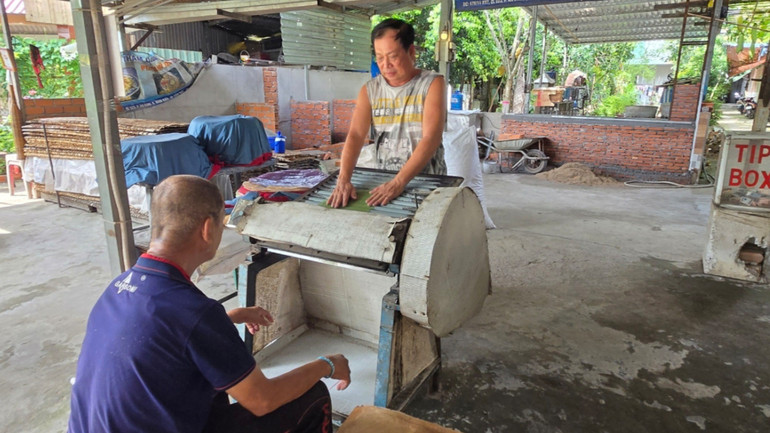
In the past, the whole village made noodles to sell to merchants on Cai Rang floating market. Our products were carried by boats and ships across the rivers of the West and were known and loved by many people. Dozens of families worked tirelessly, hired more workers but still could not make enough to sell, especially during holidays and Tet.
Mr. Huynh Huu Hoai
Mr. Duong Van Chin (owner of Chin Cua noodle factory) said that in the West, there are many noodle production facilities, but Cai Rang noodle still creates its own value because the noodles are chewy and have a characteristic sweet taste. Villagers use some types of leaves to process rice flour. Mixing rice flour and tapioca flour in the right ratio is also a way to create noodles that ensure the necessary chewiness.
Although it was once famous, with unique production secrets, Cai Rang noodle village as well as many other craft villages in Can Tho city still cannot escape the risk of fading away due to fierce market competition.
In Cai Rang noodle village, there are currently less than 10 households still making noodles. In some families, noodle kilns have been demolished to operate other types of services or grow fruit trees.
People said that the reason they are no longer interested in traditional crafts is because handmade products cannot compete with machine-made products. “Handmade noodles are more delicious, but the output is too small compared to machine-made products. Not to mention, now that people are industrializing, they invest a lot in advertising. The packaging and designs are more beautiful, more luxurious, and the prices are cheaper than traditional products,” Mr. Huynh Huu Hoai shared.
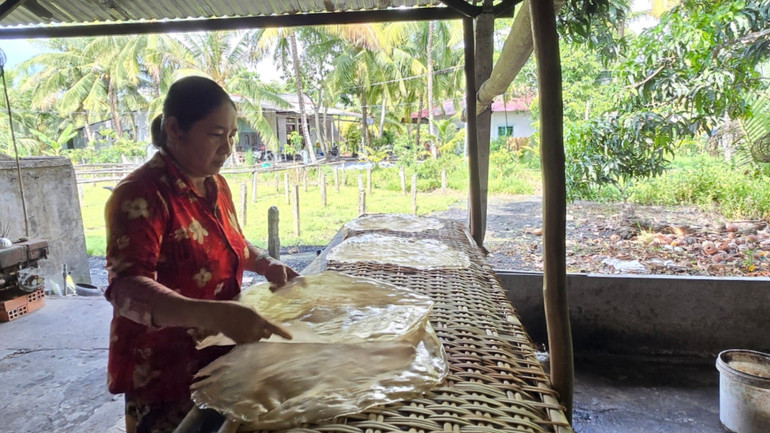
Besides, nowadays, the generation of successors to preserve the traditional craft is also very rare. Some of the young people in the village have left to find jobs in other localities, some have sought jobs with higher incomes. Therefore, many households that still maintain noodle kilns only produce at a moderate level, living mainly on gardens and livestock.
Facing the prospect of the craft village gradually disappearing, elderly craftsmen like Mr. Huynh Huu Hoai, Mr. Duong Van Chin… feel very heartbroken. With their love for the profession and the desire to preserve the traditional craft of their homeland, they tirelessly travel to many places to learn and research many ways to create value for their noodle kilns.
Mr. Duong Van Chin said that once, while delivering goods at Cai Rang floating market, he talked to some tourists and learned that they really wanted to visit and learn about how people in the West make noodles. The conversation inspired him with the idea of utilizing the land area of up to thousands of square meters, surrounded by his family's fruit trees, to do tourism .
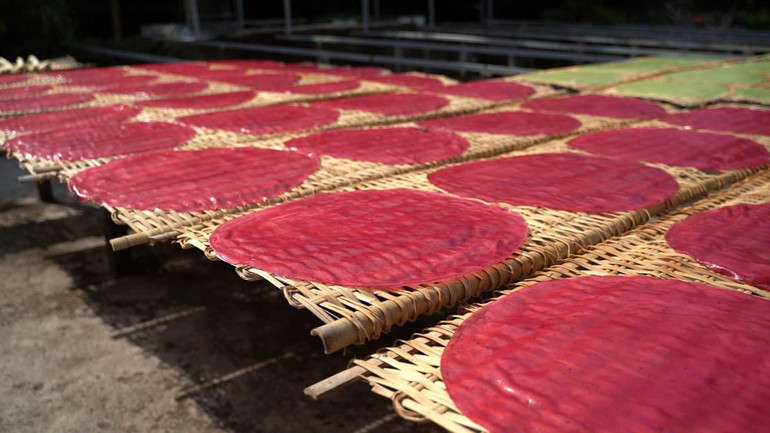
The kitchens thatched with coconut leaves were renovated. Mr. Chin brought old-fashioned tools into his space. After learning how to do tourism and connecting with some travel agencies, the noodle ovens of Mr. Chin’s family and some households are not only used to make rice paper but also become attractive tourist attractions.
Mr. Chin invested in building a separate area for tourists to visit and experience. Members of Mr. Chin’s family became tour “guides”. Coming here, tourists not only get to make their own products but also get to share about the craft village, about each stage of making the famous noodles throughout the West.
Shifting to tourism, connecting with tours and routes is a reasonable direction. After experiencing Cai Rang floating market, tourists can come here to explore more interesting things of a traditional craft village. However, to preserve the profession, it will be a long story ahead, because we are not well-trained in tourism.
Mr. Duong Van Chin
Mr. Huynh Huu Hoai spent a lot of time researching and diversifying the noodle dish to serve tourists. The brand "multi-color noodle" was born from that.
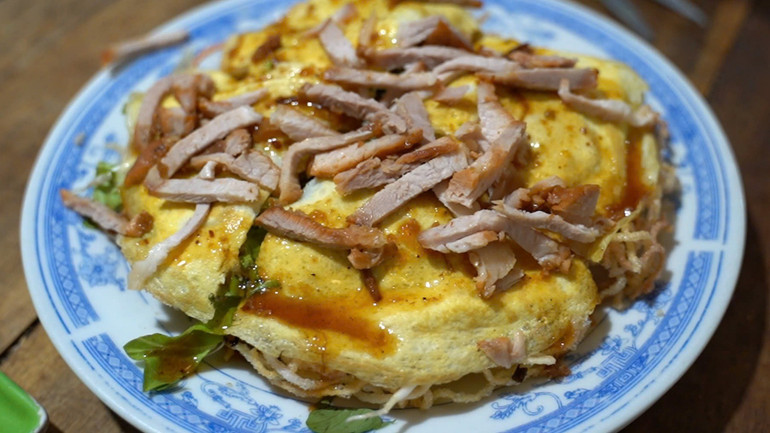
To make multi-colored noodles, Mr. Hoai uses a number of ingredients such as gac fruit, dragon fruit, beetroot, etc. mixed with flour according to a recipe he researched. Therefore, not only the traditional opaque white color, Mr. Hoai's noodles also have red, green, purple, etc.
Nowadays, many tourists coming to Cai Rang craft village show great interest in the new types of noodles. Boats serving food to tourists at the floating market also put his colorful noodles on the menu.
Not stopping there, Mr. Hoai also created the dish "Hu Tieu pizza". This dish is made from round noodles, then marinated with spices and fried until crispy. The top is covered with shredded fried eggs, braised meat and drizzled with coconut milk, fried onions, peanuts, and raw vegetables.
Currently, on the family's land of about 5,000m², Mr. Sau Hoai divides it into two areas. The outside is for selling packaged noodle products. The inside is the production area and there is a separate area for customers to experience making noodles.
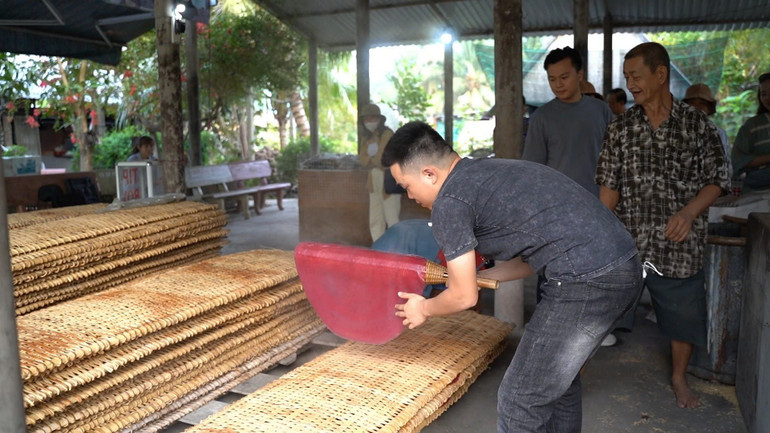
From the stories of households that still keep the passion for the profession like Mr. Duong Van Chin and Mr. Huynh Huu Hoai, we can see that Cai Rang noodle village still has a lot of potential if it knows how to combine preserving tradition with innovation.
Shifting to tourism and diversifying products not only helps increase economic value but also contributes to promoting Western culinary culture to domestic and foreign friends.
However, in order for the profession to not only survive but also develop sustainably, it needs strong participation from local authorities, the tourism industry, policy support, capital and market connections. Preserving the soul of Cai Rang noodles is to preserve a part of the cultural memory of the river delta of Tay Do.
Source: https://nhandan.vn/giu-lua-nghe-hu-tieu-cai-rang-post907108.html



![[Photo] Prime Minister Pham Minh Chinh chairs the 20th meeting of the Steering Committee for important national projects and works](https://vphoto.vietnam.vn/thumb/1200x675/vietnam/resource/IMAGE/2025/9/10/e82d71fd36eb4bcd8529c8828d64f17c)
![[Photo] Giant pipeline leading water to West Lake, contributing to reviving To Lich River](https://vphoto.vietnam.vn/thumb/1200x675/vietnam/resource/IMAGE/2025/9/10/887e1aab2cc643a0b2ef2ffac7cb00b4)



![[Photo] President Luong Cuong hosts state reception for Governor-General of Australia](https://vphoto.vietnam.vn/thumb/1200x675/vietnam/resource/IMAGE/2025/9/10/a00546a3d7364bbc81ee51aae9ef8383)














![[Photo] Prime Minister Pham Minh Chinh chairs the 20th meeting of the Steering Committee for important national projects and works](https://vphoto.vietnam.vn/thumb/402x226/vietnam/resource/IMAGE/2025/9/10/e82d71fd36eb4bcd8529c8828d64f17c)
![[Photo] President Luong Cuong hosts state reception for Governor-General of Australia](https://vphoto.vietnam.vn/thumb/402x226/vietnam/resource/IMAGE/2025/9/10/a00546a3d7364bbc81ee51aae9ef8383)




































































Comment (0)